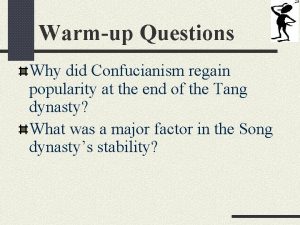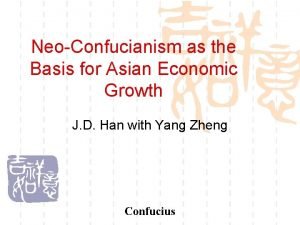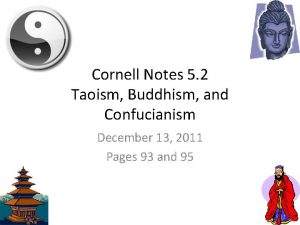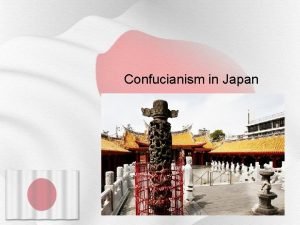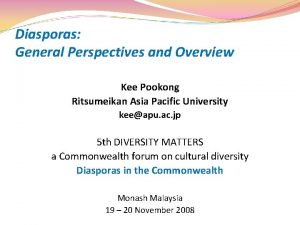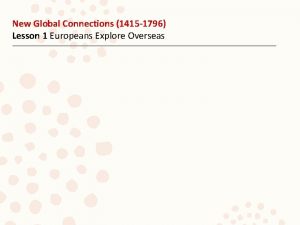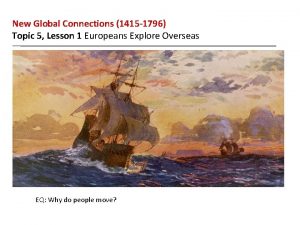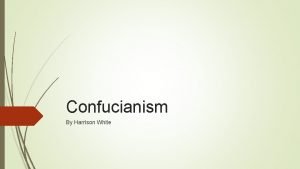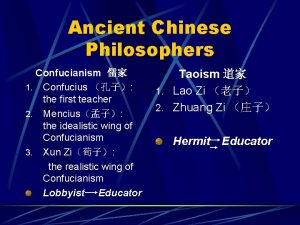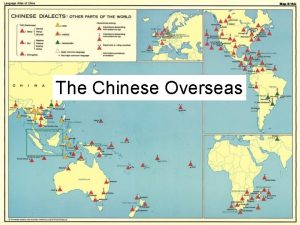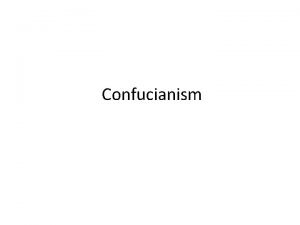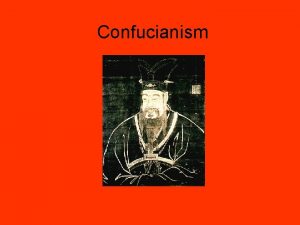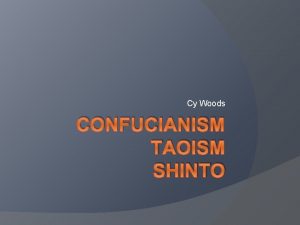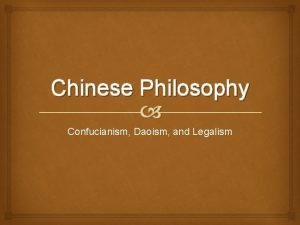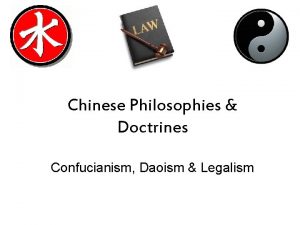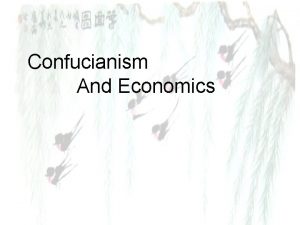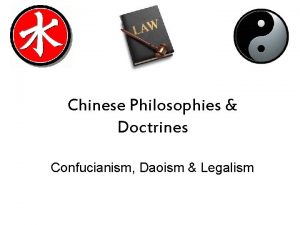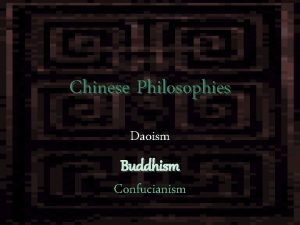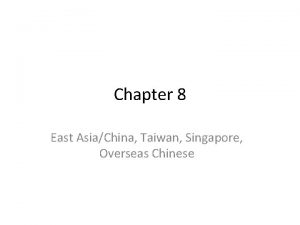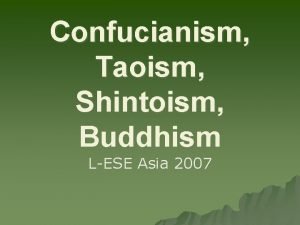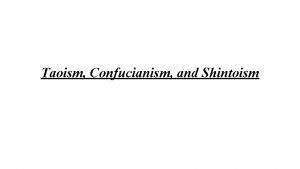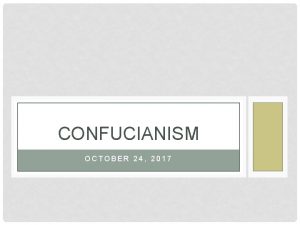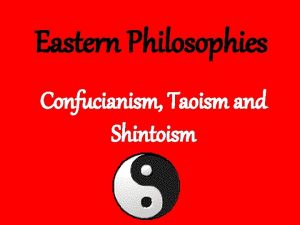The Chinese Overseas Singapore Confucianism in Singapore Malaysia























- Slides: 23

The Chinese Overseas


Singapore

Confucianism in Singapore

Malaysia

Thailand

Vietnam

Indonesia • 5 to 6 million ethnic Chinese (<3% popul. )

Philippines


Patterns of Migration • Main patterns of Chinese migration – Trade – Labor – Exile –. . .

Ancient Trade Routes

Labor Migration

Chinese migration overseas • Social pressures from the mainland – political turmoil, famine, natural disaster, Communist and Cultural Revolution, etc. • emigration from coastal provinces – Guangdong, Fujian, Hainan, etc. – waves of migration to established communities • tight economic and psychological contact with their home regions

Southeast Asia • Regional foundation for the socioeconomic network – transnational flow of people and wealth – regional dialect and kinship – define capitalism in Southeast Asia today

Selective solidarity • Ethnic Chinese remain significantly Chinese – bound to China and to Confucian ethics – unite clans and provide basis for cooperation • often hostile environment – discrimination, displacement, and violence – resentment against disproportionate control of wealth

Chinese capitalism • Environment of insecurity and mistrust • mentality to ensure survival and fuel success • entrepreneurial spirit and wealth creation became essential • family and its internal hierarchy are at the center of economic life – family enterprises

Chinese business network • extensive networks of small and mediumsized firms instead of conglomerates • networks of trust had to be extended beyond family

Chinese business network • Environment of rudimentary capital market, limited financial disclosure, and weak contract law • social networks became critical to moving economic resources across political boundaries • confidence and trust replace contracts as major guarantees of commitment

Chinese business networks • Tight network structures • flexibility and quick response to changing circumstances and opportunities • cultivating networks between politicians and Chinese firms – changes and transformation in recent years • transnational operations – economic linkages with China’s mainland

World Bank estimates • Total economic output of the 55 million ethnic Chinese in Southeast Asia – 400 billion US$ in 1991 – 600 billion US$ in 1996 • ethnic Chinese control 500 of the largest public corporations in Southeast Asia – total assets of 500 billion US$

Less visible assets • Private enterprises owned by ethnic Chinese • ethnic and social networks among ethnic Chinese businesses • crucial bonds and coordinating agents between the economies of Southeast Asia • underlying principles, norms, activities, and informal relationships

 Neo confucianism vs confucianism
Neo confucianism vs confucianism Neo confucianism vs confucianism
Neo confucianism vs confucianism Confucianism vs taoism
Confucianism vs taoism Confucian values
Confucian values Overseas chinese population
Overseas chinese population Why did singapore merge with malaysia
Why did singapore merge with malaysia Primary 3 malay worksheets
Primary 3 malay worksheets Malaysia malaysia malaysiansleereuters
Malaysia malaysia malaysiansleereuters Lesson 1 europeans explore overseas
Lesson 1 europeans explore overseas Topic 5 review questions new global connections answer key
Topic 5 review questions new global connections answer key Cdc jobs overseas
Cdc jobs overseas Portfolium suss
Portfolium suss Monash law exchange
Monash law exchange Ktk overseas ag
Ktk overseas ag American international school rome
American international school rome Europeans explore overseas
Europeans explore overseas Overseas private investment corp
Overseas private investment corp Building overseas empires
Building overseas empires Zip trading
Zip trading Confucianism when did it start
Confucianism when did it start Buddhist eightfold path
Buddhist eightfold path Taoism vs confucianism
Taoism vs confucianism Confucious facts
Confucious facts Monotheism chart judaism christianity islam
Monotheism chart judaism christianity islam
